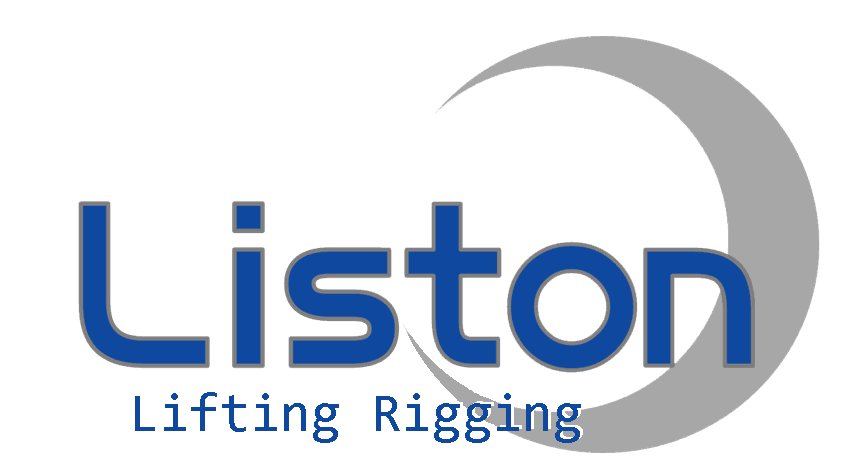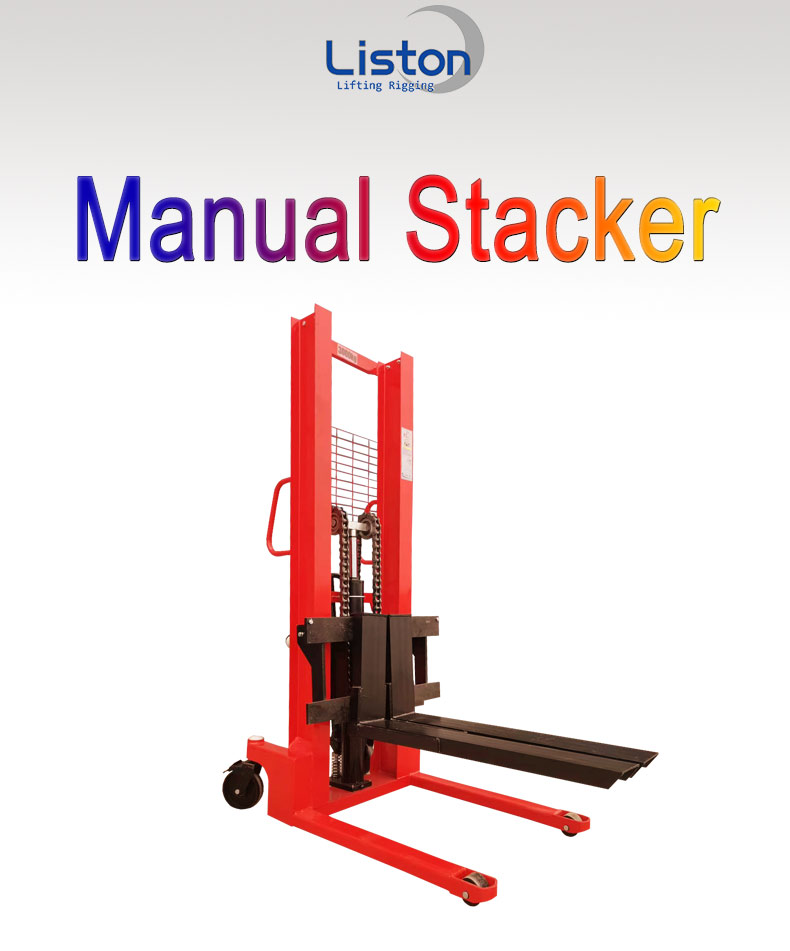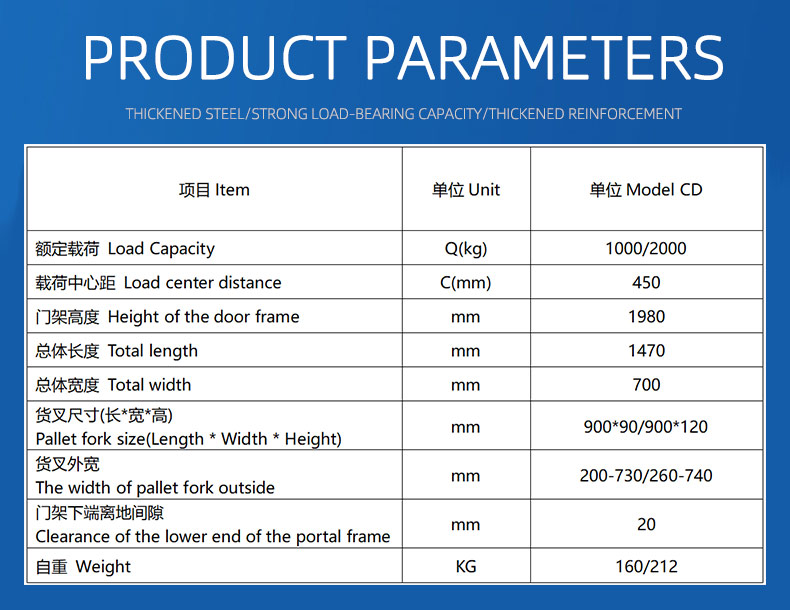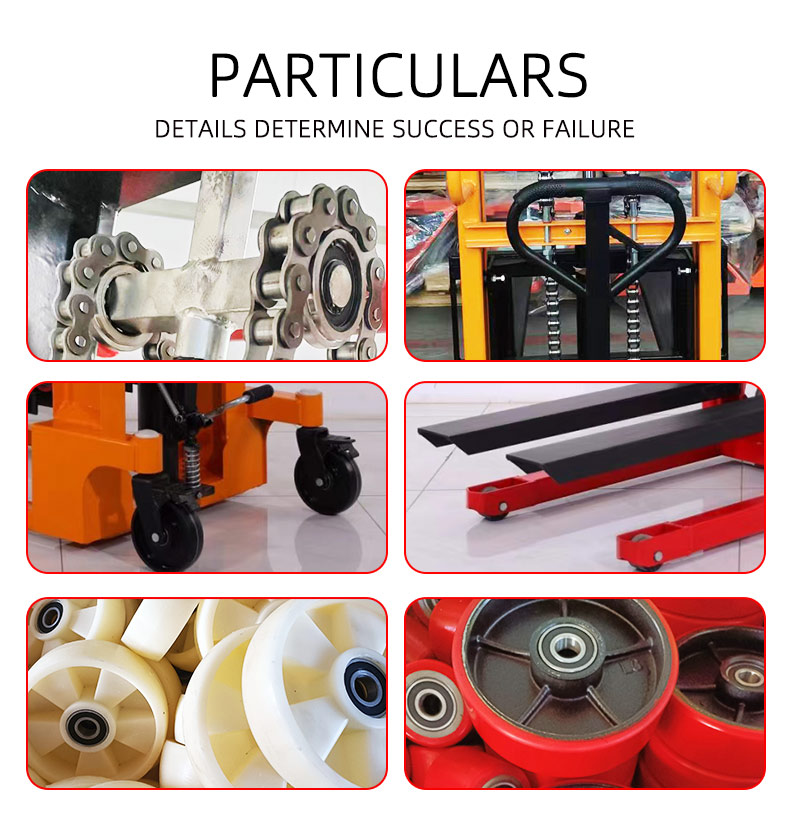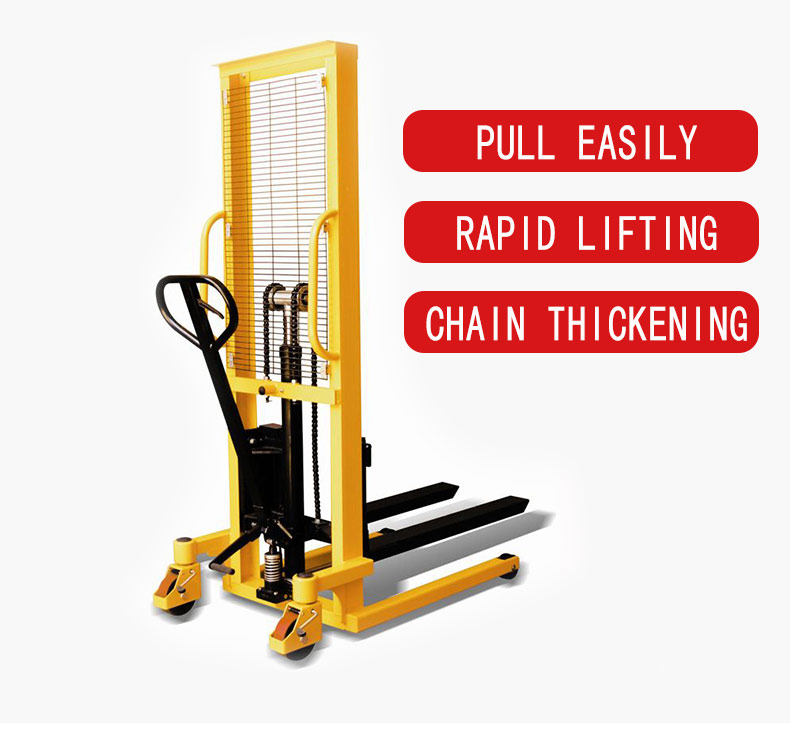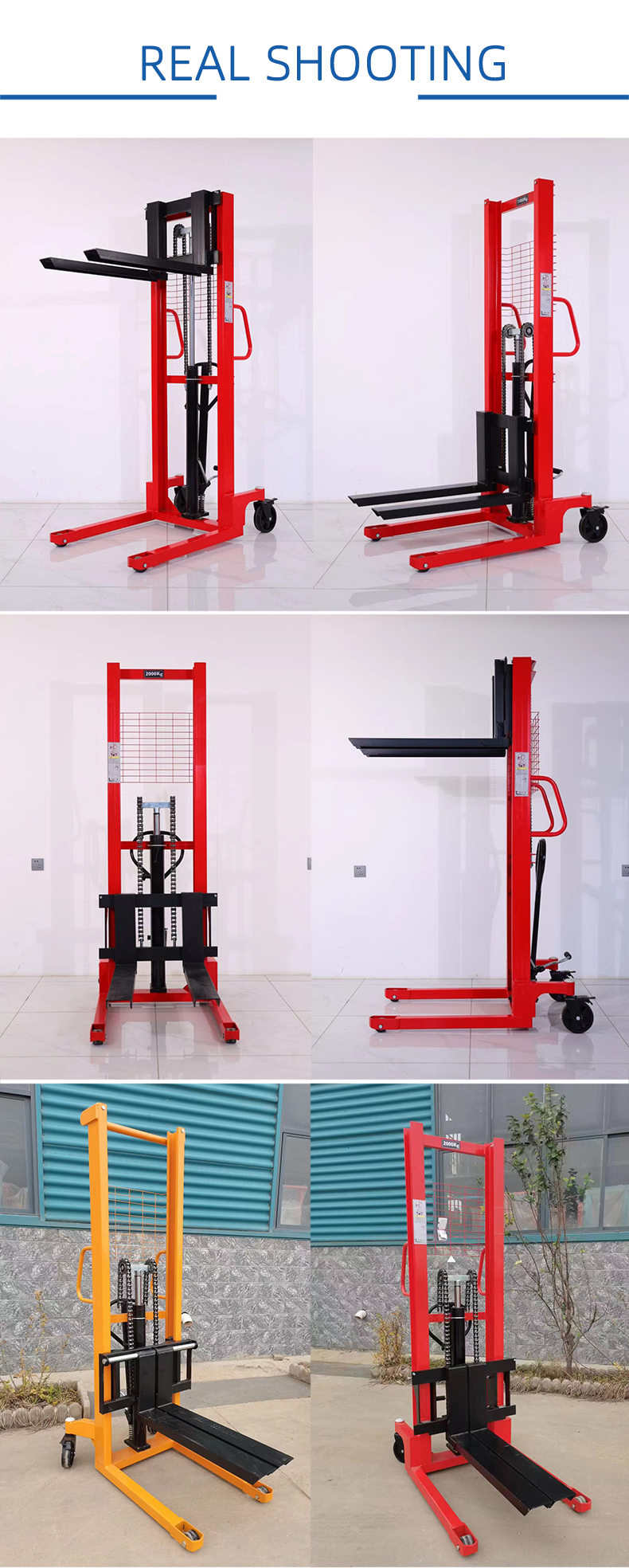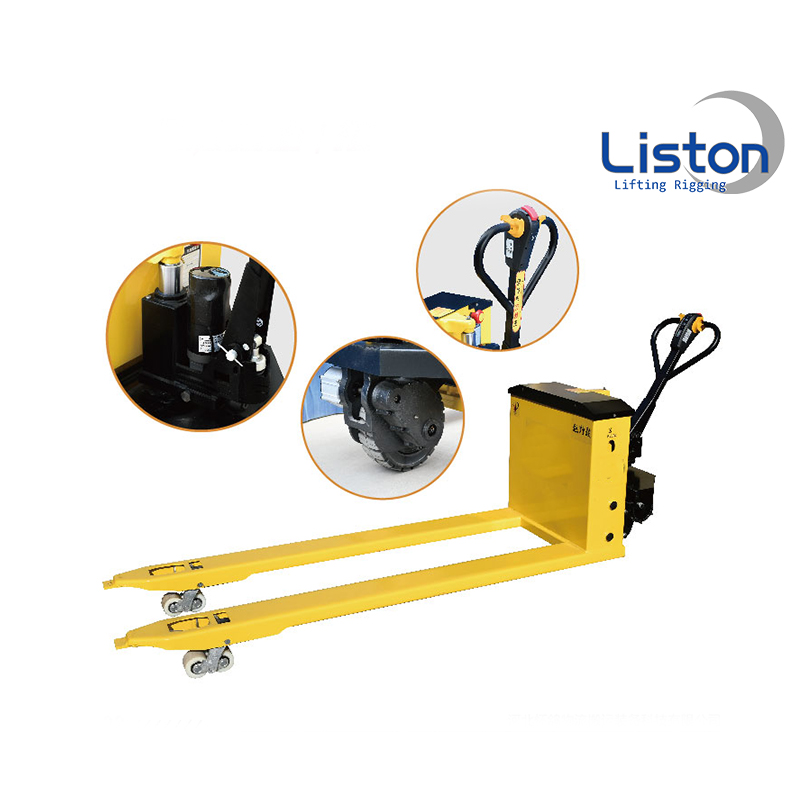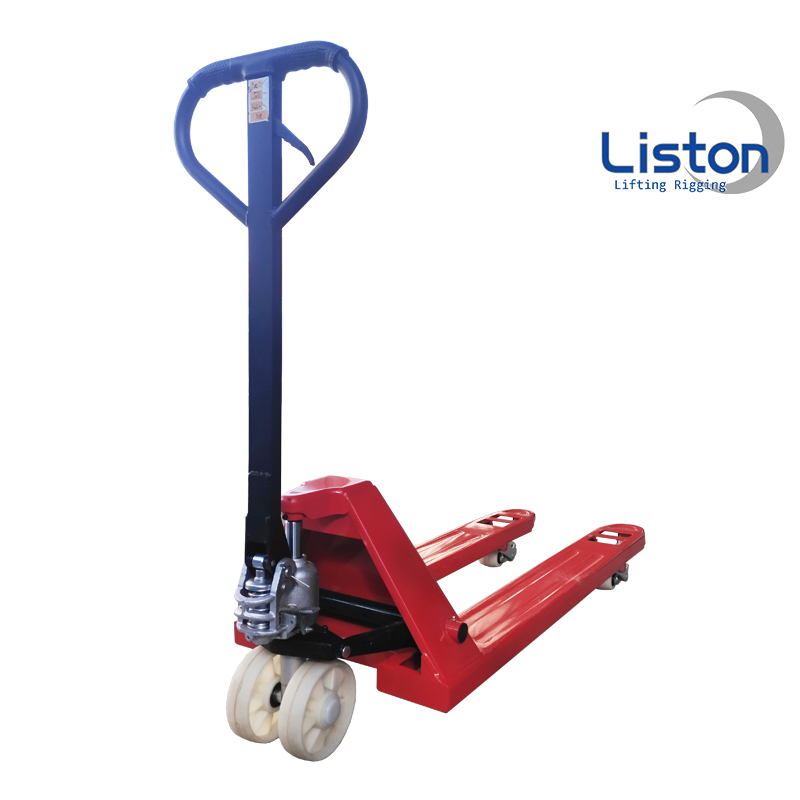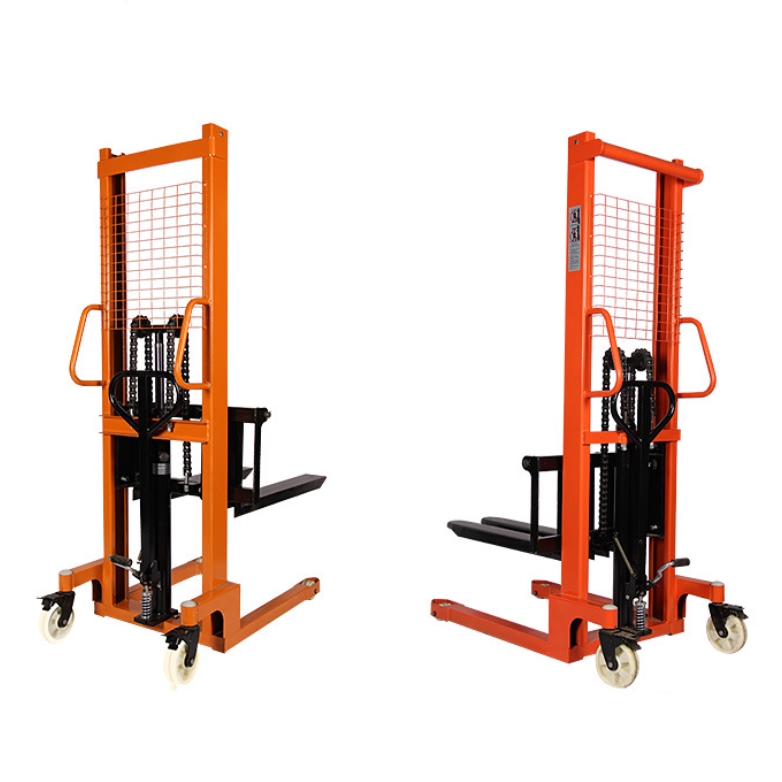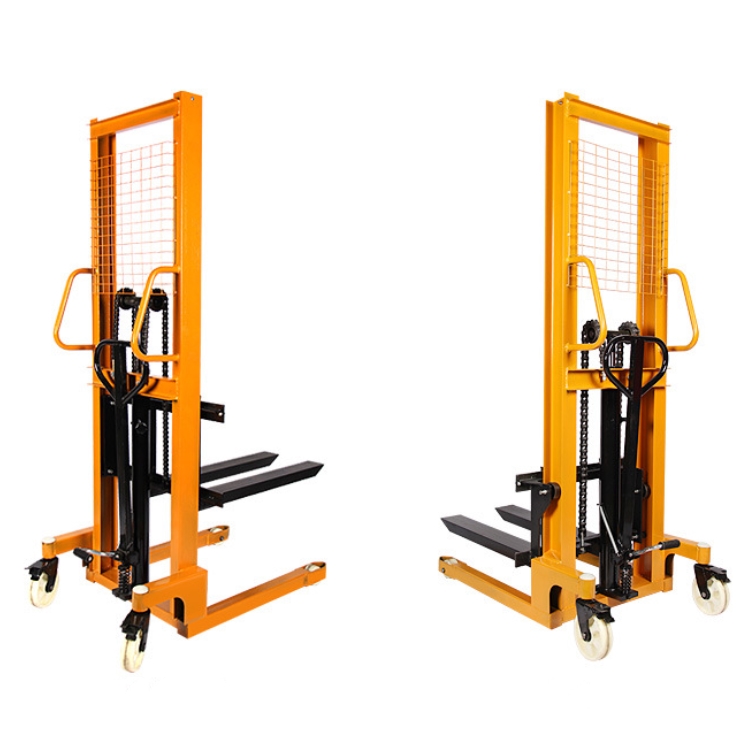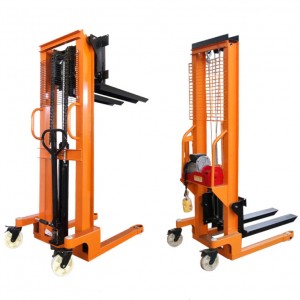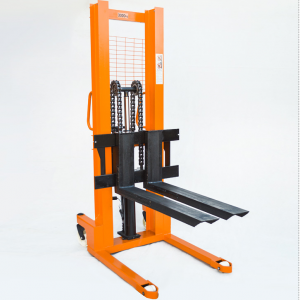Hand Pallet Manual Stacker
Key Features and Benefits of a Manual Stacker
1. Versatility: Manual stackers are capable of handling a wide range of loads, including pallets, drums, and other heavy items. This versatility makes them suitable for use in various industries, such as manufacturing, logistics, retail, and more.
2. Compact Design: Manual stackers are typically compact and maneuverable, allowing them to navigate through narrow aisles and tight spaces within a facility. This makes them an ideal choice for businesses with limited storage and operating space.
3. Easy to Operate: With simple and intuitive controls, manual stackers are easy to operate, requiring minimal training for operators. This ease of use contributes to improved productivity and efficiency in material handling operations.
4. Cost-Effective: As a manual piece of equipment, the manual stacker is a cost-effective alternative to powered forklifts. It requires no fuel or electricity to operate, reducing ongoing operational costs for businesses.
5. Safety: Manual stackers are designed with safety features such as overload protection and ergonomic handles to ensure the safety of operators and the goods being handled. This focus on safety is essential for preventing workplace accidents and injuries.
Applications of Manual Stackers
Manual stackers find applications in a wide range of industries and material handling scenarios. Some common uses include:
1. Warehousing and Distribution: Manual stackers are widely used in warehouses and distribution centers for lifting and stacking palletized goods, loading and unloading trucks, and organizing inventory.
2. Manufacturing: In manufacturing facilities, manual stackers are used for moving raw materials, finished products, and components between production areas, storage locations, and assembly lines.
3. Retail: Retail stores and supermarkets utilize manual stackers for handling and organizing merchandise, stocking shelves, and managing inventory in the backroom.
4. Small Businesses: Small businesses and workshops benefit from the versatility and affordability of manual stackers for various material handling tasks, such as moving heavy equipment and supplies.
Choosing the Right Manual Stacker
When selecting a manual stacker for a specific application, several factors should be considered to ensure the equipment meets the operational requirements. These factors include:
1. Load Capacity: The maximum weight that the manual stacker can lift and carry, which should align with the weight of the loads typically handled in the facility.
2. Lift Height: The vertical reach of the manual stacker, which determines its ability to stack loads at different heights and access elevated storage areas.
3. Fork Length and Width: The dimensions of the forks should match the size of the loads being handled, ensuring stability and proper support during lifting and transport.
4. Maneuverability: Consider the turning radius, wheel type, and overall maneuverability of the manual stacker to ensure it can navigate the layout of the facility effectively.
5. Durability and Maintenance: Choose a manual stacker that is built with durable materials and requires minimal maintenance to ensure long-term reliability and cost-effectiveness.
